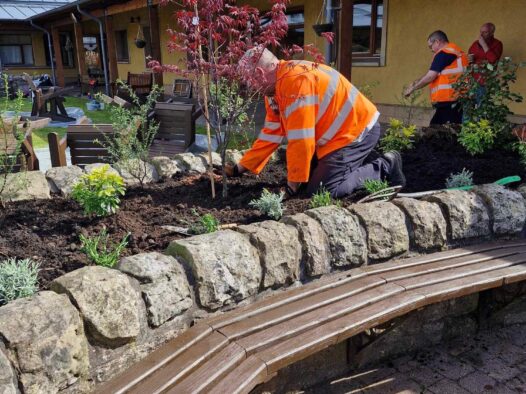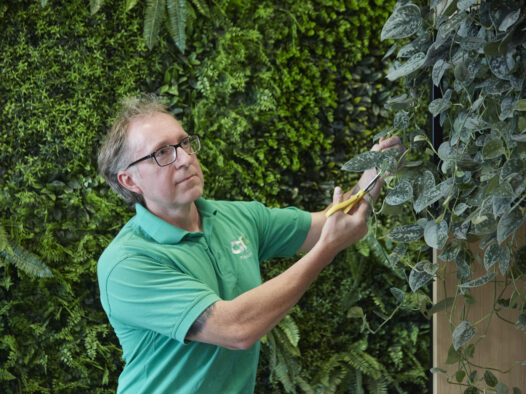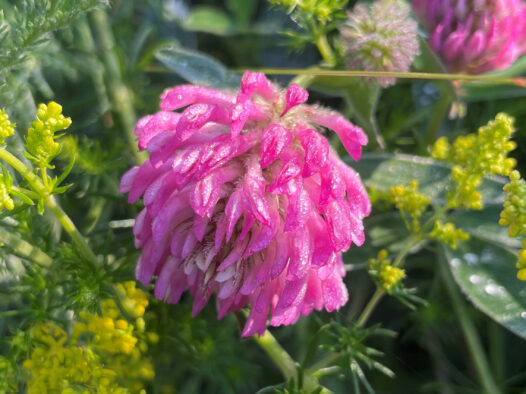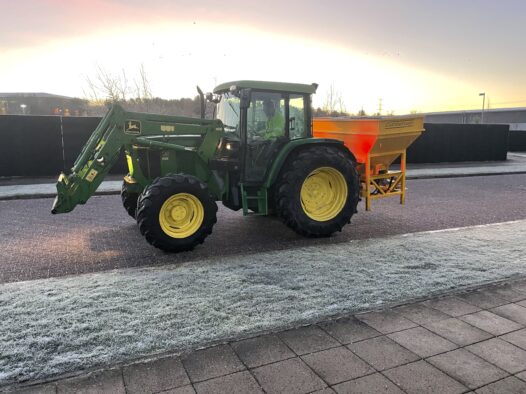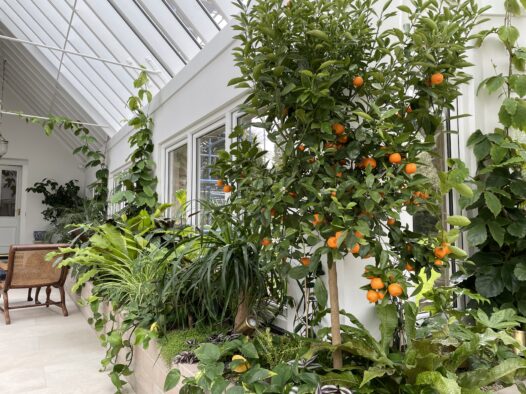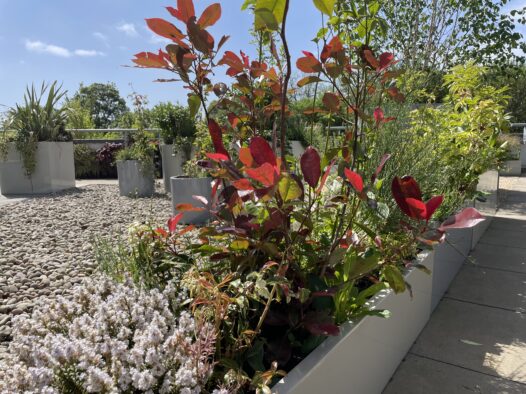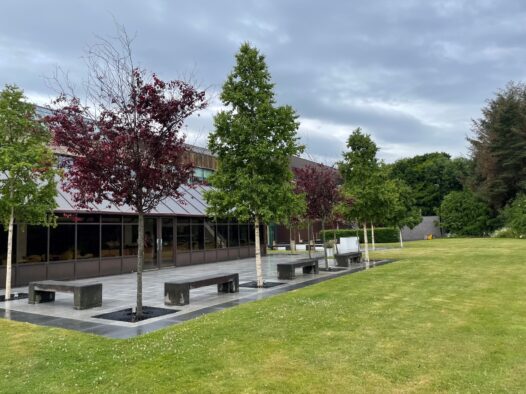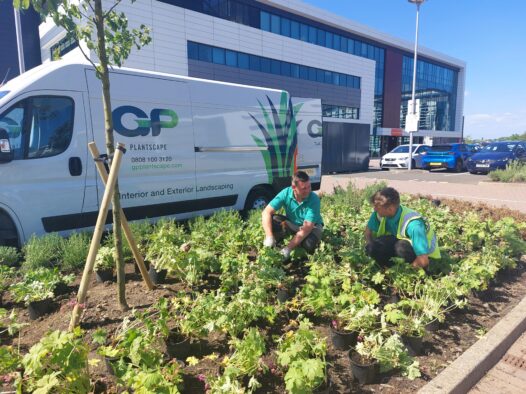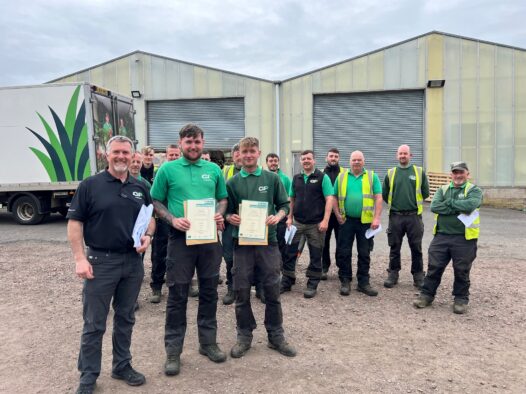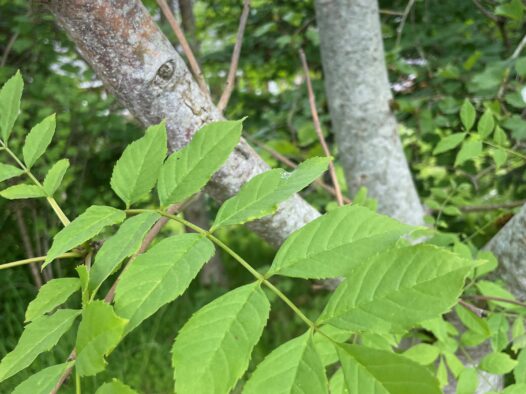Trees are an essential component of commercial exterior landscapes.

While, aesthetically beautiful they also contribute to biodiversity, help to mitigate the effects of climate change, and provide important mental health benefits to staff and visitors. But trees don’t come without responsibility. Landowners, or those to whom they have relinquished control of the exterior grounds, have a duty of care to ensure that trees on their property are unlikely to cause harm or damage. By conducting a regular tree survey, potential hazards can be identified, enabling landowners and estate managers to comply with their legal obligations.
David Gallacher of Caledon Tree Surveys Ltd has over 25 years’ experience in the industry and regularly carries out tree surveys on behalf of GP Plantscape. We caught up with David to find out why tree surveys are an important feature of estate management.
What type of tree survey is required?
While a BS5837:2012 tree survey is a mandatory requirement for planning applications on a site where trees are present, a less detailed Tree Management Survey will suffice to assist in compliance with the duty of care on most commercial properties. The simplified tree survey model is based on industry standard but excludes some of the detailed measurements and technical information superfluous to ongoing canopy management needs.
What is the objective of the survey?
The benefits of conducting a tree survey are threefold:
- Healthy and safety – it will identify any hazards that cause a threat to people on the estate or adjacent property. For example, trees with broken limbs, unstable roots or with fungal infections such as Chalara ash dieback, which causes ash trees to become brittle, all have the potential to present a dangerous threat.
- Damage to property – the survey will assess if any trees are currently causing damage or have the potential to damage property, such as buildings or fences.
- Strategic canopy management – to ensure the ongoing health of the canopy the report will make recommendations for the ongoing management of the woodland, including removing trees to avoid future congestion or planting and replacing trees.
How often should a tree survey be conducted?
In many cases an annual survey is recommended, but in practice we would schedule the survey every 15 months to enable trees to be inspected at varying times of the year and furthermore saving the cost of one survey every five years.
There are no set interval between surveys, it all depends on the canopy and according to David, the best time to advise on the most appropriate gap is on completion of the first survey. If the woodland contains a high percentage of young healthy trees for example, a survey every two to three years may be perfectly acceptable as the likelihood of potential threats and the requirement for canopy management are low. However, if the woodland contains ash trees the survey may need to be repeated within months to inspect for any signs of Chalara ash dieback infection, currently prevalent.
What trees will be surveyed?
All trees will be surveyed, but for reporting purposes any trees with an impact radius – where a falling tree or tree limb has the potential to hurt individuals or cause damage – will be tagged and have an individual record in the report. Other trees, for example in the middle of a wood where nobody ventures, will be inspected but reported on as a group and described in broader terms.
What is the outcome of the report?
The report will provide recommended actions to manage any hazards identified and to proactively preserve the ongoing health of the canopy. These actions may include felling diseased trees or those causing damage to property, removing dangerous limbs and ongoing monitoring of certain trees, such aging trees or those with a fungal infection.
For more information on tree surveys, contact GP Plantscape on 0808 100 3120 or email andrew.bell@gpplantscape.com.
Latest News
and plant care tips.



